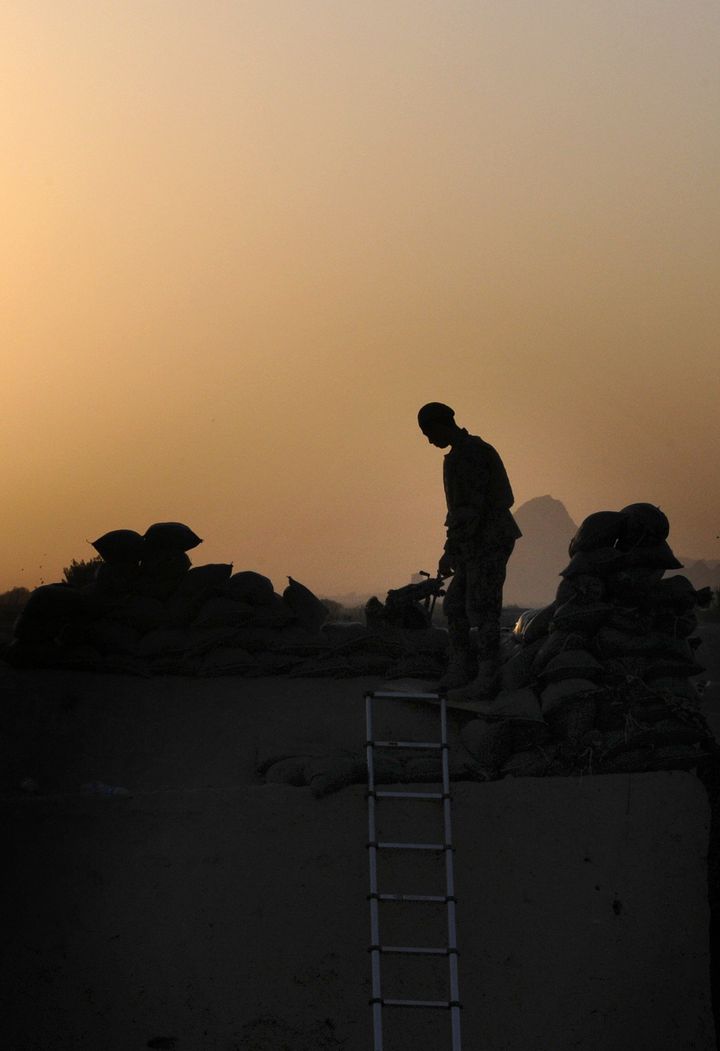
In her 2010 Statement on Diversity and Equal Opportunity , Secretary of State Hillary Clinton declared that "Diversity is one of America's greatest strengths." She charged every leader in the department with ensuring "that the workplace for which they are responsible runs on the principles of equity, fairness and inclusion." And she concluded that "In representing the United States to the world we need a workforce that reflects and respects the rich composition of our nation."
We do need such a workforce -- but we don't have it.
I arrived at Kandahar Airfield in Afghanistan on August 1, 2010 as an employee of USAID, the independent government agency charged with delivering economic and humanitarian assistance abroad. For the next 11 months, I traveled extensively throughout southern Afghanistan -- visiting Kandahar city, Dand, Helmand, Herat, Uruzgan, Zabul, Panjaway and Kakretz -- working in communications and public outreach.
I had heard a great deal about the talented people who work for the State Department and USAID. But it did not take long for me to realize that those stories were largely myths. Their lack of diversity was only exceeded by the lack of leadership and competence. Eventually, I began to wonder if the two deficits might be connected.
The people I met who worked with USAID and State were largely white men who defined themselves by how many years they had worked at their agency and the positions they had held. I was struck that few ever spoke of any tangible impact they made.
I participated in numerous meetings in which there would be 40-plus attendees and maybe two or three black people. After one particular meeting, when USAID staff at Kandahar Airfield briefed senior officials from Washington, I asked whether it was it important for the staff to reflect the makeup of the country. At first, the official from Washington acted as if he did not understand the question, then he attempted to make a joke, and finally he asked what country I was referring. The next day during a staff meeting a senior USAID official suggested that we should be careful what questions we ask. I was later told that this was not the time or place to ask this type of question.
But here's what I'm wondering: When is a good time? When is a better time than when there are 44 civilians attending a meeting to discuss Afghan policy and how the US government will interact with the Afghan government and its people and there are two black people in the room?
This is not just an academic question. The U.S. government has been in Afghanistan for more than 10 years, with white men consistently in charge. In my mind, lack of diversity is one of the reasons our policy initiatives keep failing.
When you constantly pick the same people with similar backgrounds to serve and lead, it's hard for new and different ideas to be considered -- or even discussed. In Afghanistan, I repeatedly recognized a lack of creativity in examining solutions and problems. And when the vast majority of the staff have similar backgrounds, it's easy for groupthink to set in. There is a value to different perspectives that come from different experiences, including a minority experience. A greater diversity of backgrounds, for instance, would be more receptive to questions.
One case in point: The people I worked with didn't seem to understand the importance of religion in the lives of Afghans. But I, a black man of the South, recognized it as something that could help the mission. I eventually spent a significant amount of time working on religious outreach. The religious leaders were the most credible messengers, and if we were going to reach the masses we needed to have a dialogue with the religious leaders. It's been 11 years now; does the U.S. government have a religious engagement plan for Afghanistan? If not, why not? What resources, including people, time and money have been allocated for a religious engagement program?
I saw an inordinate amount of time spent discussing poorly-performing programs. I suggested that we should immediately terminate those programs which were not working. We were cutting and reducing programs at home, so this seemed like a fairly logical suggestion. But there was no willingness to even entertain the idea. It is clear in retrospect that USAID tried to run too many programs at the same time, and failed miserably to monitor or provide metrics that would fairly measure their effectiveness.
That could also be result of another problem: For many of the bureaucrats I'm talking about, there seemed to be little true interest in policy issues, success of the mission, or even what the mission was. For them, the pay, the perks, and the prestige of their Afghanistan assignments were better than they had at home.
Finally, there's another way in which the lack of diversity harms the mission: The failure to have a diverse presence in Afghanistan provides ample evidence to those who oppose American policy that America doesn't practice what it preaches. Even the illiterate know that America is more than middle aged white men.
What message is the U.S. sending to the world when the overwhelming majority of staffers in the agencies charged with implementing US foreign policy are white men? Do white men have some peculiar talent and ability that will allow them to be successful in the pursuit and development of foreign policy and international development? The results of the last 10 years in Afghanistan suggest, if anything, the opposite.
Cross-posted from Nieman Watchdog.